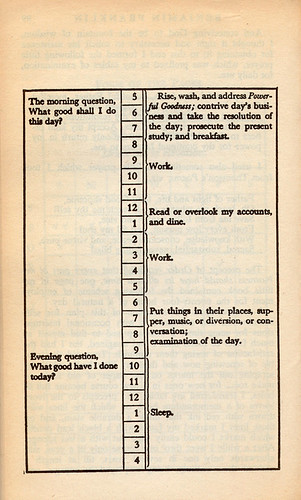I truly feel that mistakes are how we get ahead in life. Without making them, how else could I know it was a mistake? And it just so happened that an absent minded triathlete forgot one major rule this past training weekend: eat! Saturday morning began with fresh-brewed Kona-blend coffee and a delicious cup of buckwheat with fresh fruit and egg whites. After checking a few blogs, the NY Times and the weather report, it was time to start the weekend-warrior like session.
I’m pretty new to long runs, but am already addicted. The feel of being on the road for several hours is exhilarating. I especially love when I see someone either washing their car or taking their dog out for a walk at the beginning of a run only to see them an hour or longer later with a stunned déjà vu look on their face. Yes it’s me again, I say in my head. On one of my longest runs (short for some, but 20 miles was a milestone for me) I started before the sunrise and looped a 5-mile route four times. Each time I passed a group of cows munching on their breakfast of grass, their heads would lift with a quizzical look on their undulating faces. Oddly, I did have an internal anthropomorphic dialogue in my head. It went like this: “There’s some weird guy running around” said one cow while the other replied, “He must be looking for grass.” To where the first cow said, “This is some fine grass here.” But by then, the other cow was distracted by a few stemmed yellow daisies waving in the wind. It is on long runs, though, where, I truly feel a connection with life. Call it a runner’s high or some type of religion, but it is here where I feel both grounded and like I am levitating. This past Saturday marked the longest run I’ve done since the Philly marathon: a 2-hour conversational pace fun run.
I passed a few runners on the road, all of which offered a warm hello and smile with a word of caution about some icy spots up ahead or puddles to be aware of. I felt connected to one runner as we both slipped on a patch of ice when passing, both laughing it off nervously ignoring that a fall could have ended the season early. After running by some cafes to spot out for lunch, circling around some neighborhoods with houses for sale I’ve been looking at, my feet turned towards home – ready to take a quick hot shower, throw back a recovery smoothie and head to meet a friend at the pool for a swim.
All went according to plan and I soon found myself gliding along the water to 500yard repeats, again working on my aerobic endurance. Soon, though, my friend got race-happy and we both found each other splashing through the water for a few intense intervals. With red eyes and a runny nose, my body ached telling me enough is enough. Off to the second hot shower of the day. Could there be any better way to start off the weekend?
And here is where I wonder if anyone has learned from a similar mistake. After the pool, I rushed home to print off some paperwork and meet a friend whom I am coaching for his first triathlon. Excited to complete his first sprint triathlon, he came prepared with a slew of questions, all of which I was happy to help answer. We went to eat at a local café I’ve never been to. The atmosphere sold the idea of Jamaican relaxation and tiki-hut like ambience, the perfect place to spend on an icy wintry morning. An hour later is when it started. I realized I hadn’t eaten anything since the swim and my stomach gurgled for food. How could I forget to eat something after the swim? I thought. Nutrition is my obsession and I always have backup recovery food for times just like this. All this backup though sat nestled in my car, miles away from where I sat with a forced smile, ignoring the signs that I was starving. To make things worse, the kitchen was short-staffed and our food ended up taking another hour to make. So there I sat, three hours after a killer workout session and I hadn’t eaten much since my run’s recovery shake – albeit a deliciously nutritious homemade green-goodness smoothie.
I thanked my friend for lunch and walked in my front door. Soon thereafter, I jumped into my third warm shower because chills had overtaken my body. Thirty minutes later I still had not warmed up and my body ached. Couch ridden for the next several hours, my body recouped after a good dose or two of Vitamin C and another meal. Yet, it wasn’t until later that night that I felt back to normal. So, I learned my lesson. It’s quite simple actually: train smart to remain injury free and eat smart to stay healthy.


